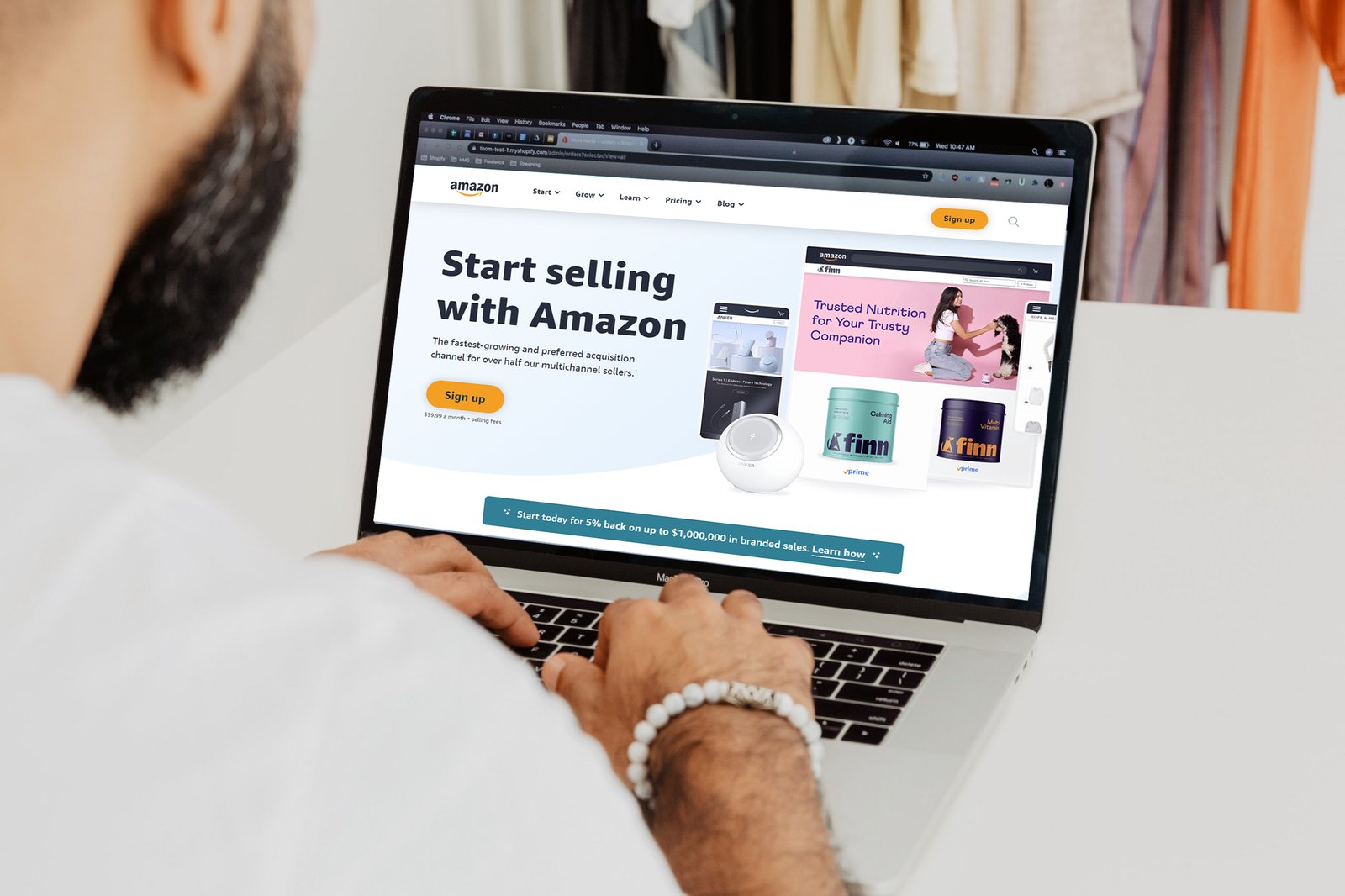Are you ready to tap into the thriving world of e-commerce? Selling on Amazon can provide a lucrative opportunity for entrepreneurs and side hustlers alike. With millions of active customers browsing the platform every day, your products could reach an audience far beyond your local market. But before you can start raking in those sales, you’ll need to set up your Amazon Seller Account. Fortunately, this process is straightforward and accessible—perfect for beginners and seasoned sellers alike.
In this guide, we’ll walk you through everything from the benefits of selling on Amazon to tips that will help you thrive in this competitive landscape. Whether you’re looking to clear out some clutter or launch a full-fledged business, we’ve got you covered with all the essential steps needed to get started successfully! Let’s dive right in!
Benefits of Selling on Amazon
Selling on Amazon opens up a world of opportunities. With millions of active shoppers, your products gain immediate exposure to a vast audience.
Amazon handles much of the heavy lifting for you. From payment processing to customer service, their infrastructure simplifies the selling process. You can focus more on growing your business instead of managing logistics.
Additionally, Amazon’s reputation boosts buyer confidence. Shoppers often prefer purchasing from known platforms, making it easier for them to choose your listings over others.
Another significant benefit is scalability. As demand for your products grows, you can easily expand your inventory and reach new markets without the usual hassles associated with growth.
Utilizing tools like Amazon Seller Central gives you insights into sales trends and customer behavior—essential data that helps refine your strategy and improve performance over time.
Steps to Create an Amazon Seller Account
Creating an Amazon Seller Account is straightforward and user-friendly. Start by visiting the Amazon Seller Central website. Click on the “Sign up” button to begin.
Next, you’ll need to enter your email address and create a password. Make sure it’s secure; this is vital for protecting your account.
Once registered, select between two selling plans: Individual or Professional. The Individual plan has no monthly fee but charges per sale, while the Professional plan comes with a monthly subscription fee but offers additional features.
After choosing your plan, fill in essential information like your business name and contact details. You will also need to provide tax identification information as part of compliance with regulations.
Verify your identity through Amazon’s process. This may require documentation such as bank statements or utility bills to confirm your address and identity before you can start selling products on their platform.
Setting up Your Profile and Payment Information
Setting up your profile is a crucial step in establishing your Amazon seller account. Begin by providing accurate personal details. This includes your name, business name, and contact information.
Next, you’ll need to upload necessary documents for verification. Amazon may ask for identification or proof of address. Make sure these are clear and legible to avoid delays.
Now it’s time to set up payment information. You’ll link a bank account where you want to receive payments from sales. Ensure that the bank account details are entered correctly; even small errors can cause significant issues later on.
Additionally, consider setting up tax information if needed. Understanding tax implications will help streamline your selling experience on the platform.
Take each step carefully; accuracy lays the groundwork for future success as an Amazon seller.
Choosing a Product to Sell on Amazon
Choosing the right product to sell on Amazon is crucial for your success. Start by identifying a niche that interests you. Passion fuels perseverance, and a genuine interest in your products can set you apart from competitors.
Research market trends using tools like Jungle Scout or Helium 10. These platforms provide insights into what’s currently selling well. Look for products with steady demand but manageable competition.
Consider profitability as you analyze potential items. Calculate costs including production, shipping, and Amazon fees to ensure healthy margins.
Don’t overlook customer reviews of similar products. They reveal gaps in the market where you could excel—like better quality or enhanced features.
Test smaller batches before committing fully. This approach minimizes risk while allowing you to refine your offerings based on real feedback from customers.
Fulfillment Options: FBM vs FBA
When selling on Amazon, choosing the right fulfillment method is crucial. Two popular options are Fulfillment by Merchant (FBM) and Fulfillment by Amazon (FBA).
FBM allows sellers to handle storage, shipping, and customer service directly. This gives you greater control over inventory but requires more hands-on management.
On the other hand, FBA lets Amazon take care of logistics for you. Your products are stored in Amazon’s warehouses. They manage shipping and returns while providing excellent customer service.
While FBM can save fees associated with FBA, it also demands time and resources to manage effectively. Conversely, FBA offers convenience at a cost but can enhance visibility due to Prime eligibility.
Your choice will depend on your business model and how much involvement you want in daily operations. Each option has its unique advantages tailored to different seller needs.
Tips for Success as an Amazon Seller
To thrive as an Amazon seller, it’s essential to adopt effective strategies. Start by conducting thorough market research. Understanding your competition and customer preferences can give you a significant edge.
Optimize your product listings with engaging titles, clear descriptions, and high-quality images. This helps attract buyers’ attention and enhances their shopping experience. Keywords are vital; incorporate relevant ones into your listings to improve visibility in search results.
Pricing is another critical factor. Regularly analyze competitor prices while factoring in your costs to remain competitive without sacrificing profit margins. Seasonal trends also play a role—stay ahead of the curve by adjusting inventory accordingly.
Engage with customers through prompt responses to inquiries and feedback management. Building a positive reputation can lead to increased trust and repeat business.
Continuously educate yourself about Amazon’s policies and best practices for sellers. The landscape changes frequently, so staying informed allows you to adapt quickly.
By following these tips, you’ll be well on your way toward achieving success as an Amazon seller!




